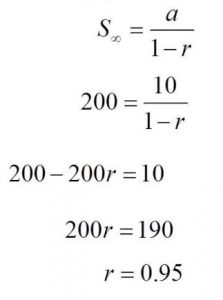The short story “Father and Son,” by Bernard MacLaverty is about the broken relationship of a son and his Father. The Photo Compilation Plot Point project analyzes the plot of the story and gives a visual aspect. MacLaverty alternates the point of view between the Father and son throughout the story. This style of writing lets the reader inside both the character’s heads. Through the duration of the story it is obvious that there is a strain the relationship, that is not one or the others fault. MacLaverty hints at previous issues the son has had as well as the problems the father is now going through. The hope of this project is to break down key points in the plot and analyze them to give greater detail.
Exposition-

“He will stand in his bare feet, his shoes and sock is in his hand, looking at me” (MacLaverty 165)
From the start of story MacLaverty shows right away how much the father cares for the son. It introduces the topic of the father observing the son and the son knows but doesn’t react. These actions lead into the bigger picture of their relationship and their future together.
Initiating Incident-

“‘Wake up, son. I’m away to my work. Where are you going today?’ ‘What’s it to you?’” (MacLaverty 165)
This shows how little emotion and reaction the son shows to his Father. The Father is trying to show an interest and care for the son, but the son pushes him away. Even though the Fathers actions seem normal, but it shows the first sign of his paranoia. Throughout the story it becomes more apparent that the Father is paranoid.
Rising Action –

“‘What do you be doing out to this time?’ ‘Not again’ ‘Answer me.’ ‘Talking.’ ‘Who with?’ ‘Friends. Just go to bed, Da, will you?’ ‘What do you talk about?’ ‘Nothing much’ ‘Talk to me, son.’ ‘What about?’“ (MacLaverty 166)
This quote shows the more paranoid side of the Father and also the troubled relationship he has with his son. The son gives short answer and is unresponsive to the conversation. The Father pushes really hard on the son to have communication but it’s clear the son doesn’t want that.
Rising Action-

“The door swings open and he pushes a hand gun beneath the pillow seen long enough, black and squat, dull like a garden slug. He sits, my son, his hands idling empty, staring hatred” (MacLaverty 169)
The Father constantly checks up on his son to see that he’s alive and to know what he is doing. It’s clear in the story that the son does not like the Father knowing what he is doing. The sons actions bring himself into dangerous situations which could justify the fathers paranoid actions.
Rising Action-

“There is a ring at the door. The boy answers it, his shirt-tail out. Voices in the hallway. My son with friends. Talking. What he does not do with me”
(MacLaverty 169)
The son is more trusting of his friends and acquaintances than he is of his own Father. At this point in the story the father is obsessing with the sons lack of communication and that overtakes his paranoia. It’s surprising that the father is more jealous of the relationship the son has with the person at the door, rather than being paranoid about who is at the door.
Climax-

“There was a bang. A dish cloth drops from my hand and I run to the door. Not believing…” (MacLaverty 169)
The father knows that a gun was shot and he doesn’t hesitate, he just runs toward the door where the sound came from. All the paranoia is gone his is only worried about his sons well being. He is aware of the gun shot but doesn’t want to believe his son is hurt.
Falling Action-

“Blood is spilling from his nose. They have punched you and you are not badly hurt. Your nose is bleeding. Something cold at the back of your neck” (MacLaverty 169)
The father finds his son and he does not let himself believe that his son is dead. He tries to convince him self that they just punched him and that he imagined the gun shot. The father is still trying care for him even though he knows the son is dead.
Denouement-

“I take my sons limp head in my hands…My son, let me put my arms around you” (MacLaverty 169)
The Father is still looking for the connection even when his son is dead. When he puts his arms around his son he is trying to comfort him. The Father still wants to give him love.





















